Learnings from the Future Fund and the compelling case for one particular asset class
I recently wrote a piece for the Livewire Listed Series on replicating Australia’s sovereign wealth fund using only ASX-listed securities.
It was a compelling thought exercise, the anchor for which was the Future Fund’s recent position paper: Death of traditional portfolio construction?
In that paper, the Future Fund talks about the current market conditions and the need for investors to “work harder and employ different combinations of strategies than they have in the past”.
As a result of the more challenging environment, the fund identified a number of portfolio implications, and the levers that they will pull to address these implications.
As it turns out, I wasn’t the only one paying attention to the Future Fund paper. Not more than a day after publishing my wire, I was fortunate to attend a VanEck event, where the title of the presentation was ‘The new investing paradigm: Alternative approaches and exposure in the New World.
The first speaker, VanEck's Head of Investments and Capital Markets, Russel Chesler, leant heavily on the Future Fund paper and its portfolio implications, breaking them down and then providing useful solutions. The second speaker, VanEck Head of Active EM Debt, Eric Fine, spoke directly to the benefits of emerging market debt. The following wire is a summary of their presentations.
Future Fund and portfolio implications
As a result of the more challenging environment, the Future Fund identified a number of portfolio implications, and the levers that they will pull to address these implications.

VanEck agrees with what the Future Fund is doing, saying that “the approach makes a lot of sense”. And whilst the objectives of the FF are different from retail investors, there are a lot of learnings to be taken.
VanEck has subsequently come up with its own ideas and levers to address the findings of the Future Fund.

VanEck provided some more detail as follows:
DEFENCE AND LESS CORRELATION TO THE MAINSTREAM
Infrastructure:
- Low correlation to traditional asset classes
- Infrastructure are defensive assets - historically outperform when government yields fall
- Falling yields are a performance tailwind
- Persistent inflation regime ideal for real assets
DEFENCE
Gold
- Bullish fundamentals
- Central banks continue to accumulate gold
MORE GRANULARITY & LESS CORRELATION TO THE MAINSTREAM
China A-shares
China is set to be the world’s biggest economy by 2024 according to the World Bank and IMF
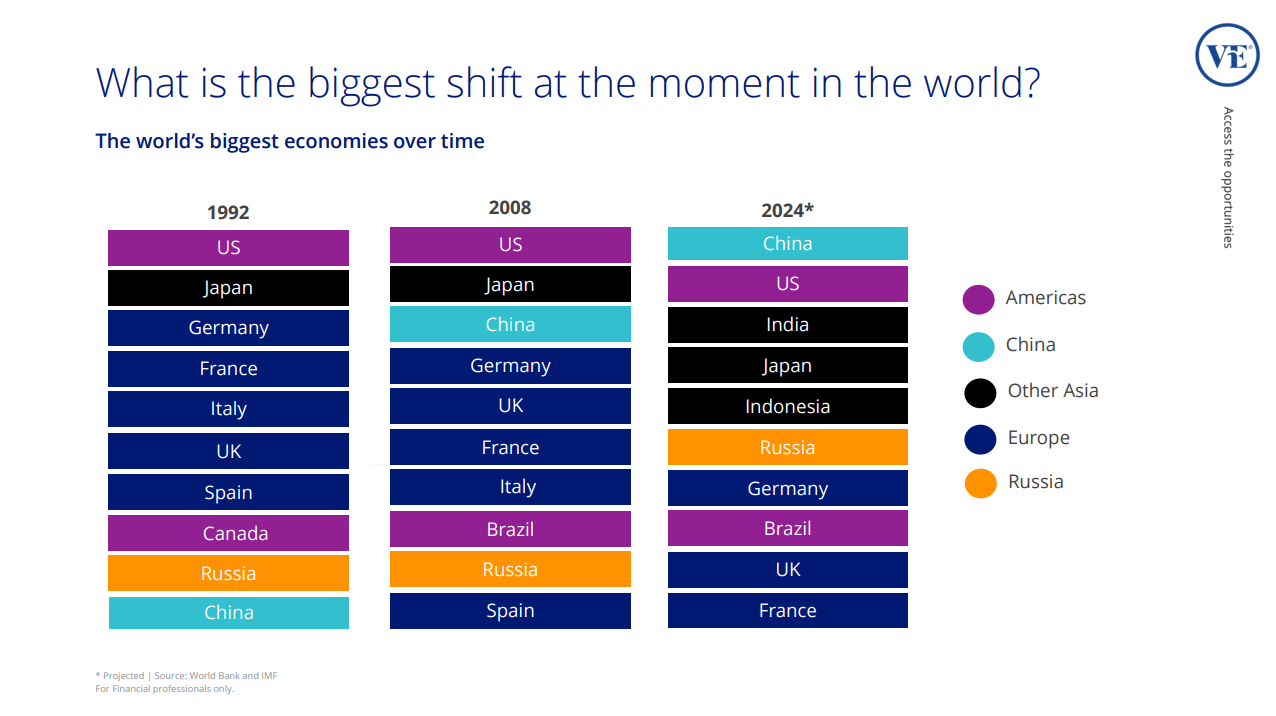
MORE ALPHA
Quality Investing
- Flight to quality - outperformance in times of volatility
- Historically, quality loses less and recovers faster
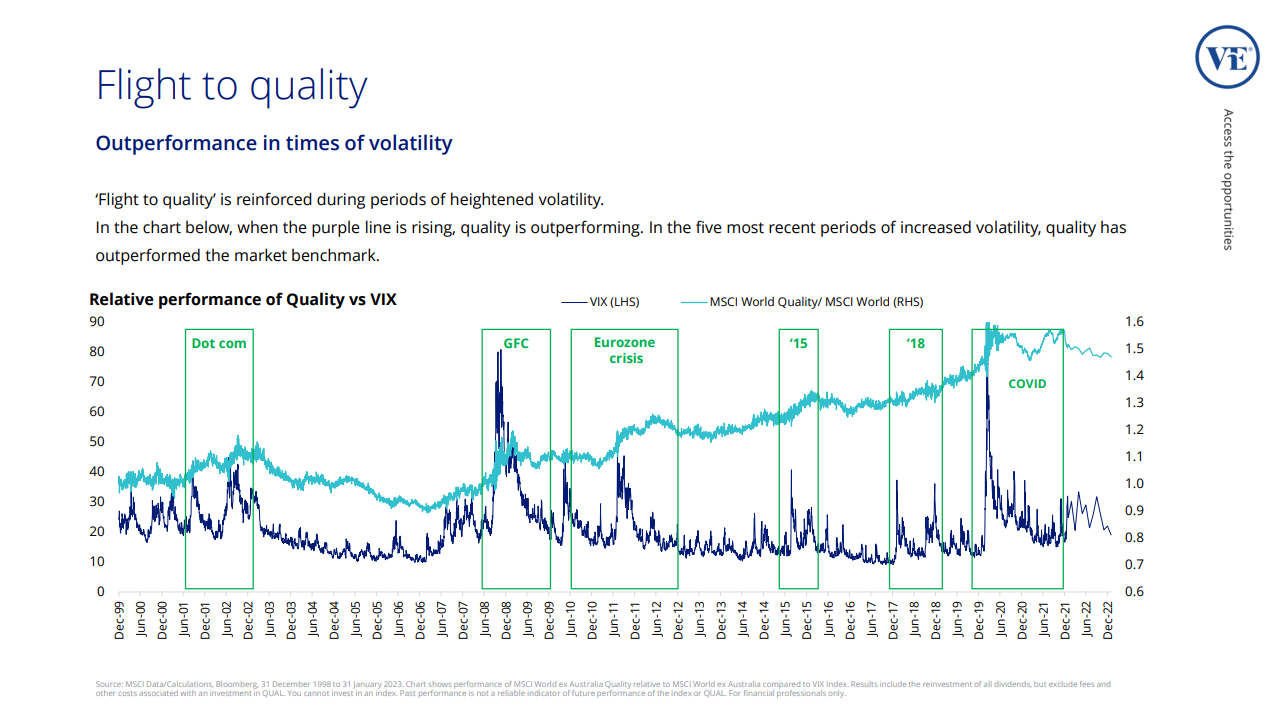
MORE DOMESTIC & MORE ALPHA
Factor indifferent Australian equities approach
- Value or growth does not matter as equal weighting has outperformed throughout the factor cycle
Below are the different ETFs that VanEck offer as solutions regarding the portfolio implications above. Please note, none of these are recommendations - please do your own research.
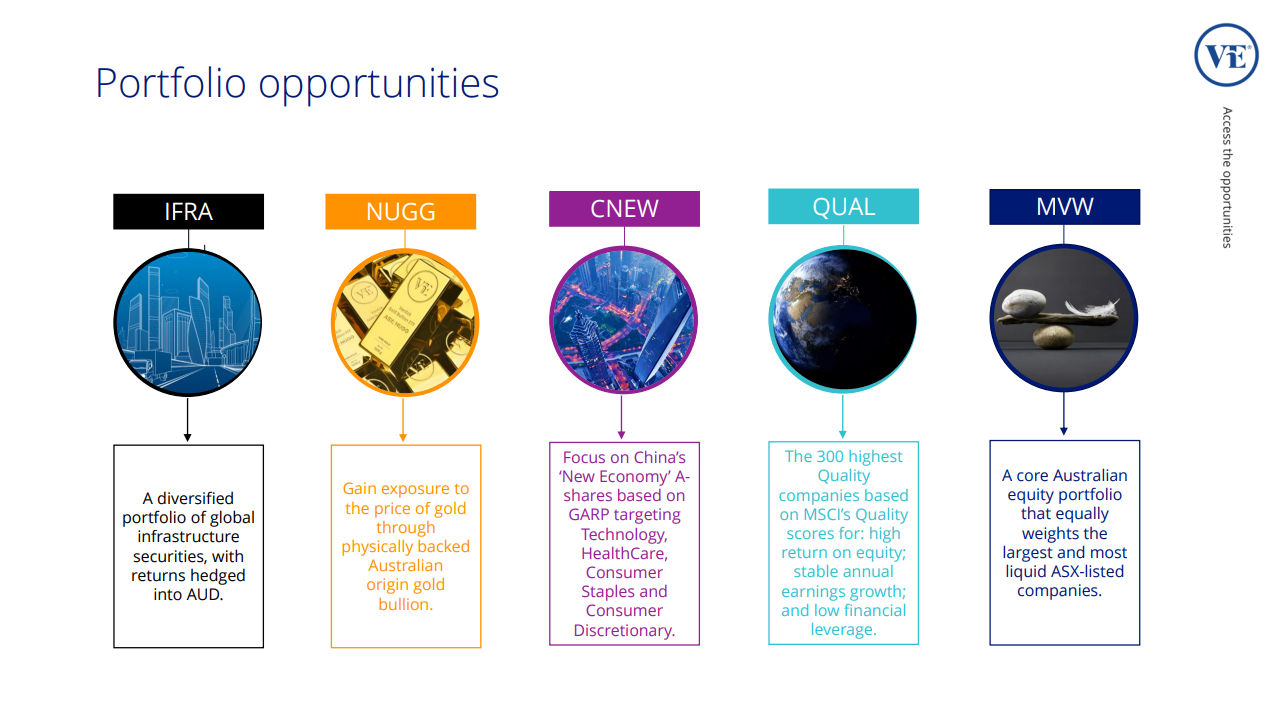
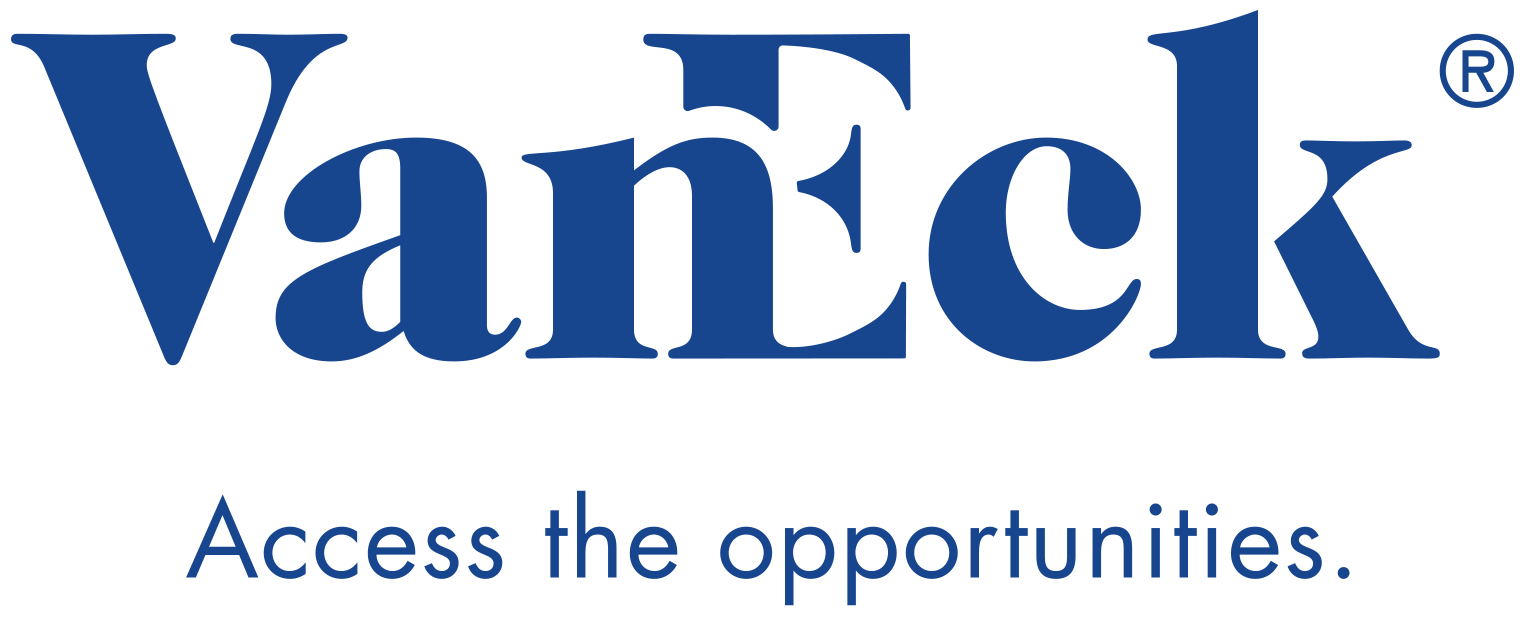




THE CASE FOR EMERGING MARKET FIXED INCOME
The second part of the presentation talked about the attractiveness of emerging market debt, and Eric Fine identified three main reasons why the space looks good right now.
1. Emerging markets have low debt
“Right now, the world is concerned about debt. EM had to stop spending after the second year of covid, they simply couldn’t afford it…” notes Fine.
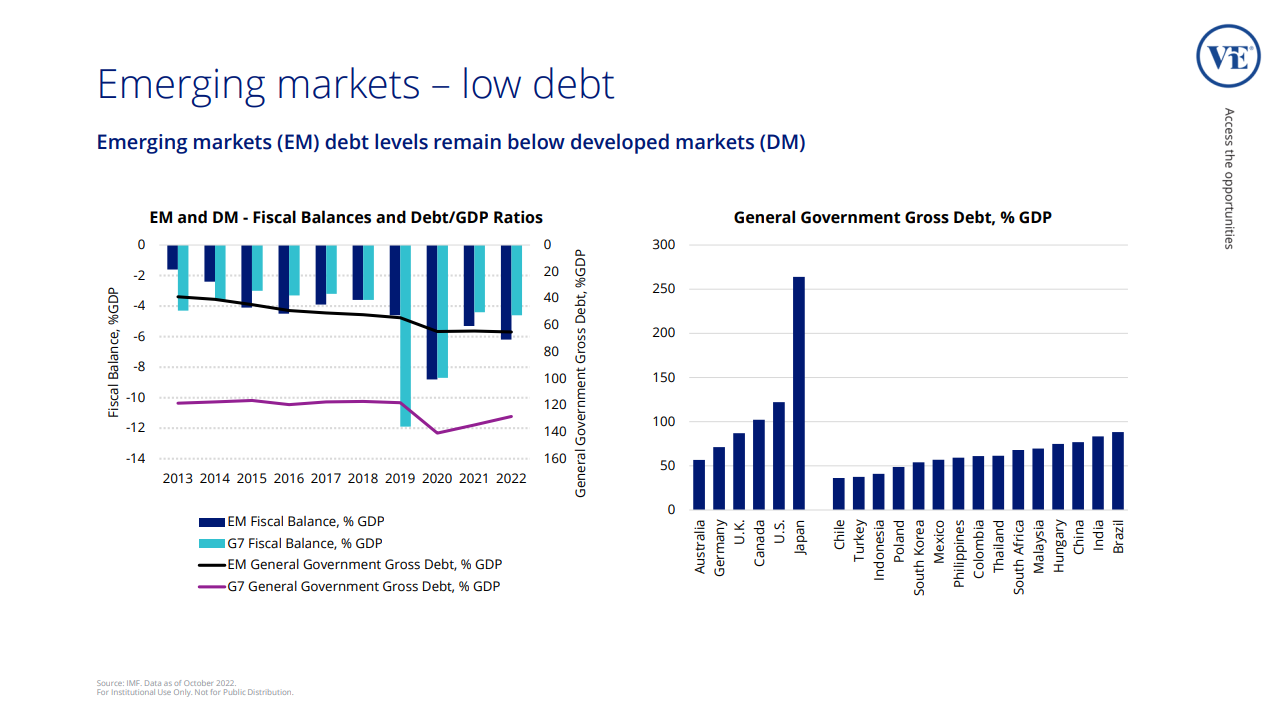
2. EM debt pays you more
In a world concerned about debt, but also concerned about where yield is going to come from, this is advantageous.
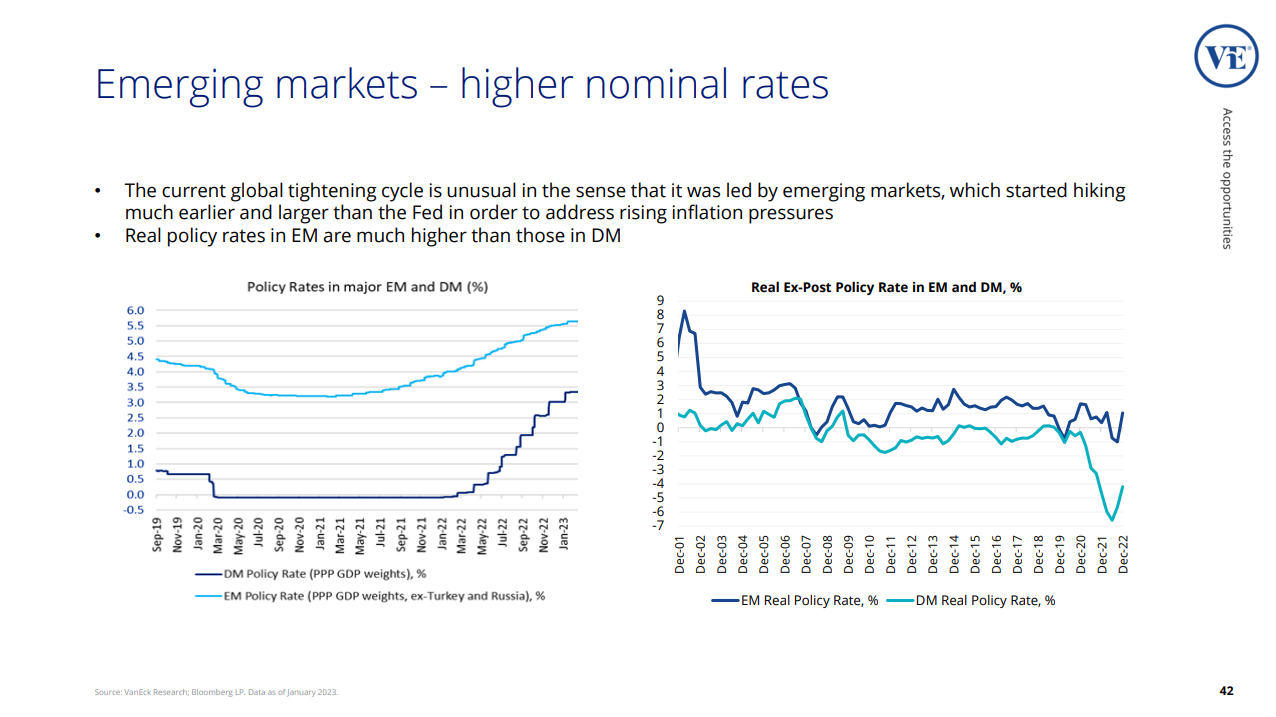
3. It benefits from commodity prices
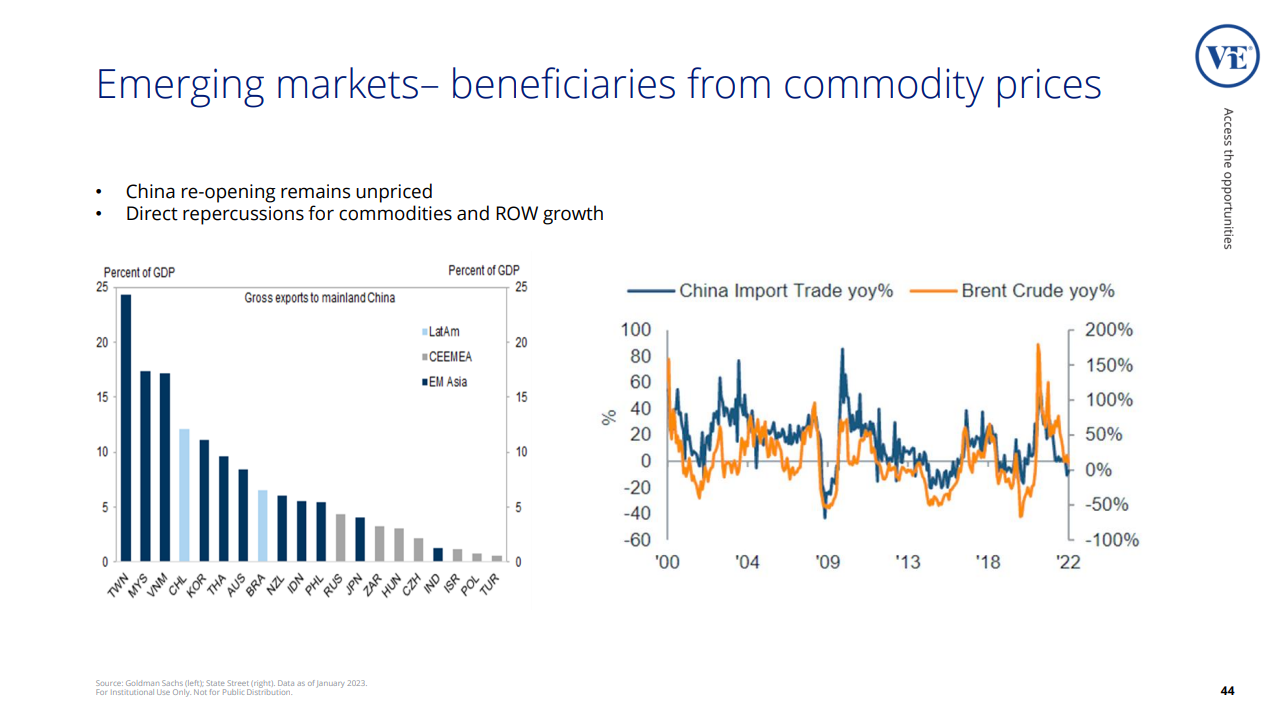
“In a world where most exposures don’t benefit from commodity prices, EM does.”
Fine contrasts the opportunity in EM against more developed markets, noting that “US Treasuries, JGB’s, eurozone bonds, GILTS… maybe even Canadian bonds at some point, de-rating. [They have] high debts, and don’t pay you really anything in any risk-adjusted way”.
How is VanEck positioned?
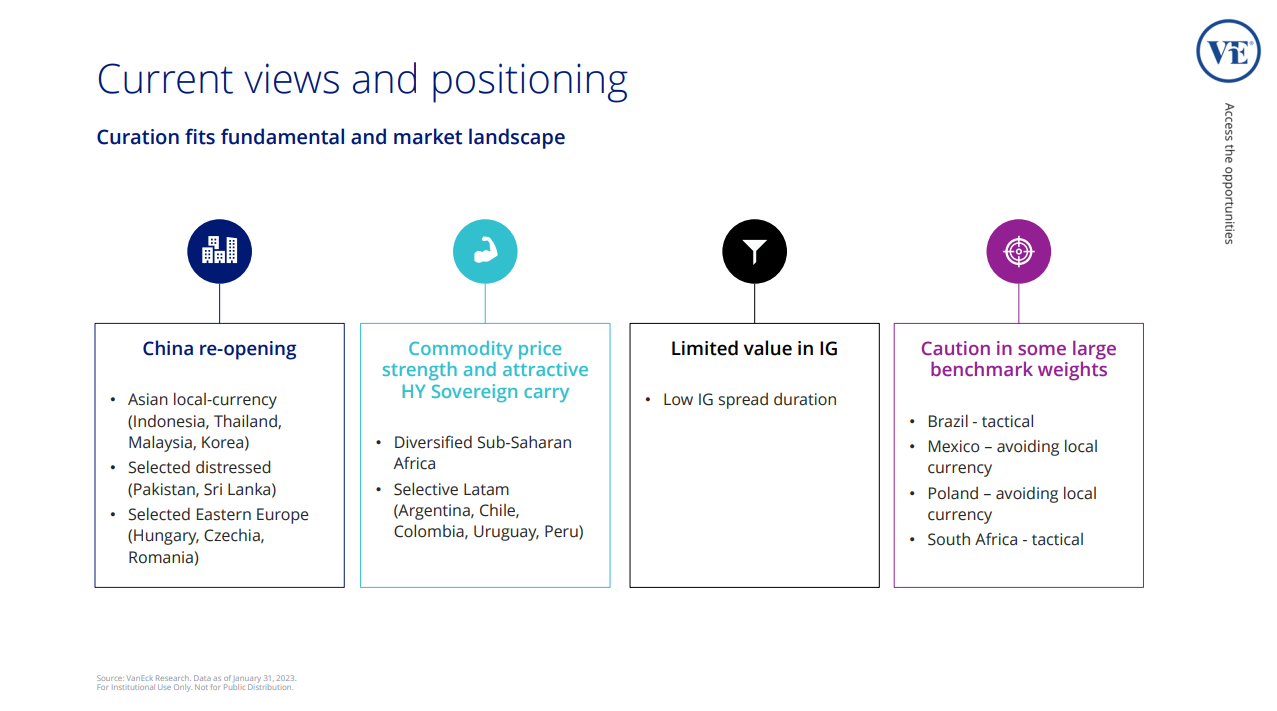
China reopening
“We are out of China but we are positioned for the China reopening, which is a very positive thing”.
Fine notes that for somewhere like Thailand, coming out of covid their tourism industry has accelerated quickly, there are bond shortages, and the government will let the currency go wherever it wants to go.
When it comes to Pakistan and Sri Lanka, Fine notes that they are playing China off the US, and the portfolio has selective exposures in these regions.
Commodity price strength
Fine points to Argentina, noting that whilst the country is highly indebted, they owe the money to the IMF, and they have so much debt that IMF “is just going to roll it. We own this tiny amount of debt that is paying really high yields”.
What doesn’t VanEck own?
Fine notes that what the portfolio is not doing is also really interesting.
He doesn’t really see many opportunities in investment grade debt, the portfolio holds no Mexico local (as opposed to USD) debt, no Polish local debt, and it is making tactical decisions in Brazil and South Africa - that is, VanEck is in and out of those markets, depending on the opportunities/risks at the time.

Unlock opportunities with VanEck
VanEck's investment strategies are designed to give you unequalled access to markets, sectors and intelligent investment ideas. Find out more.
1 topic
6 stocks mentioned
6 funds mentioned
1 contributor mentioned


